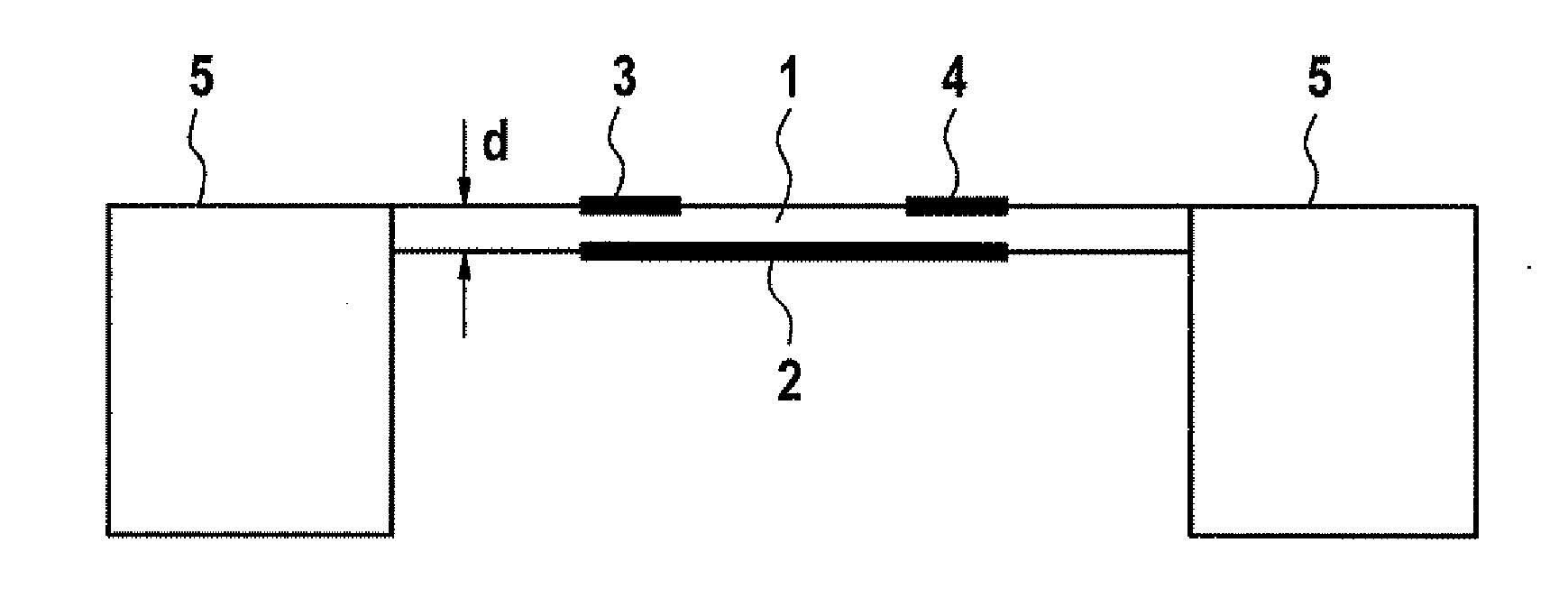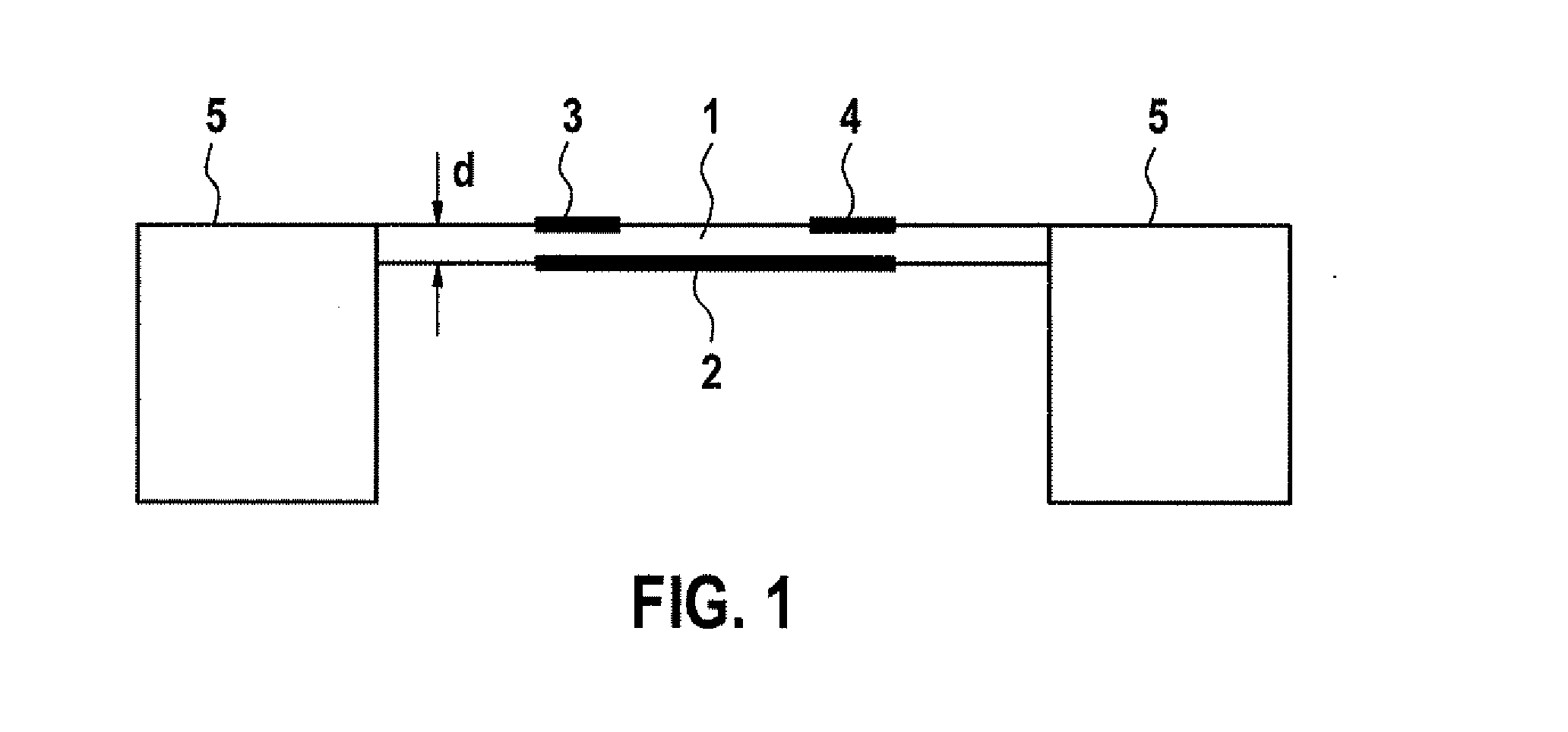Particle sensor
a particle sensor and sensor technology, applied in the field of particle sensors, can solve the problems of limited measurement accuracy, and achieve the effects of improving the time resolution of measurement, reducing the sensitivity of particle sensors, and reducing the cost of measuremen
- Summary
- Abstract
- Description
- Claims
- Application Information
AI Technical Summary
Benefits of technology
Problems solved by technology
Method used
Image
Examples
Embodiment Construction
[0035]FIG. 1 shows that the particle sensor includes a diaphragm 1, a diaphragm heater 2 situated on diaphragm 1, and two measuring electrodes 3, 4 situated on diaphragm 1, for the electrical conductivity measurement. Diaphragm heater 2 and measuring electrodes 3, 4 are situated on diametrically opposing sides of diaphragm 1 in the specific embodiment shown. FIG. 1 further shows that diaphragm 1 is suspended by a substrate 5 on two diametrically opposing points.
PUM
 Login to View More
Login to View More Abstract
Description
Claims
Application Information
 Login to View More
Login to View More - R&D
- Intellectual Property
- Life Sciences
- Materials
- Tech Scout
- Unparalleled Data Quality
- Higher Quality Content
- 60% Fewer Hallucinations
Browse by: Latest US Patents, China's latest patents, Technical Efficacy Thesaurus, Application Domain, Technology Topic, Popular Technical Reports.
© 2025 PatSnap. All rights reserved.Legal|Privacy policy|Modern Slavery Act Transparency Statement|Sitemap|About US| Contact US: help@patsnap.com


